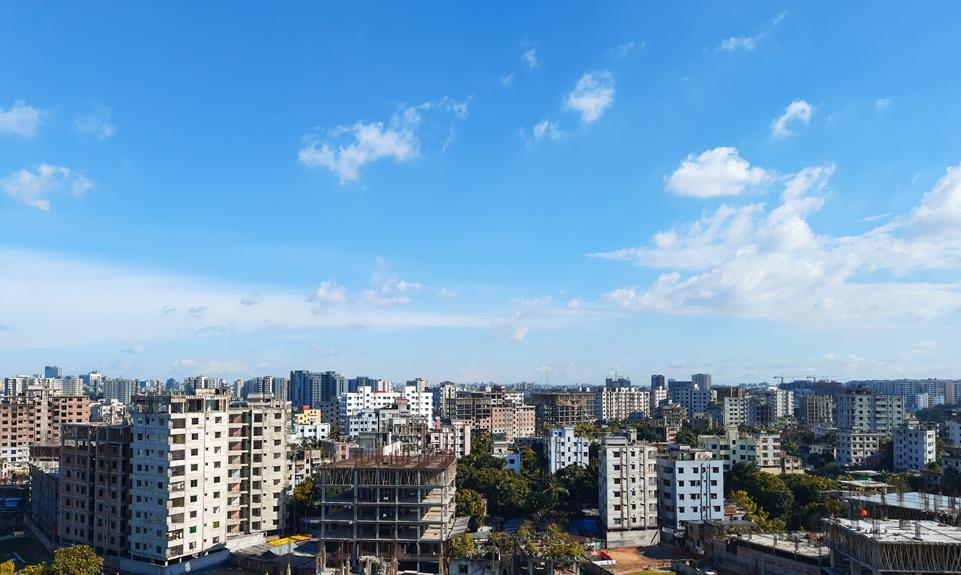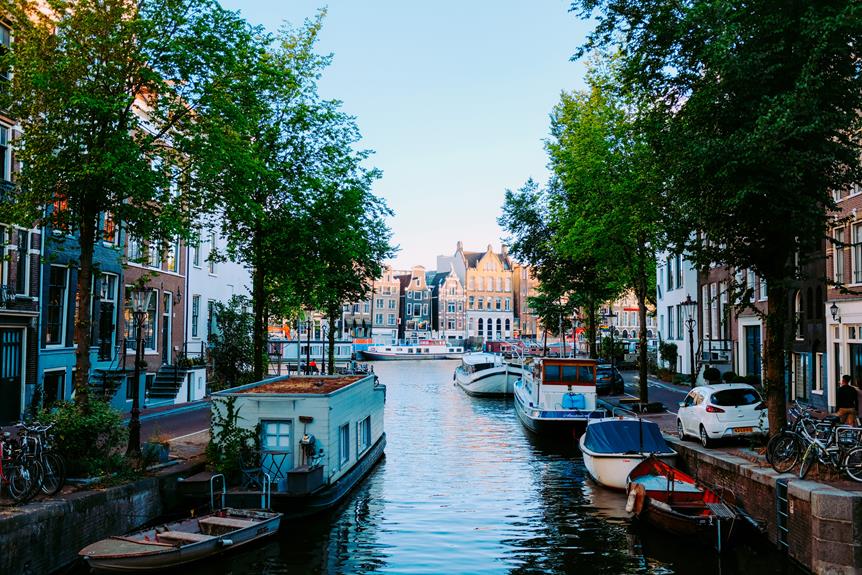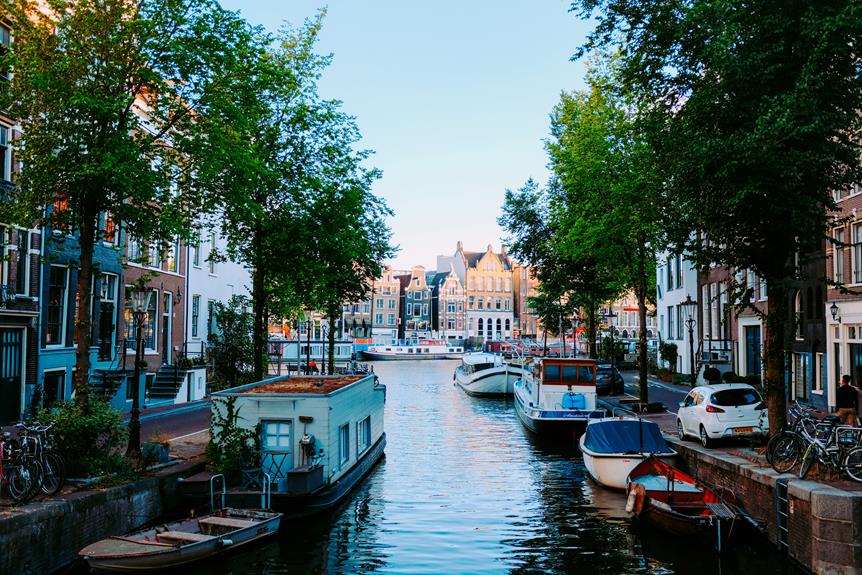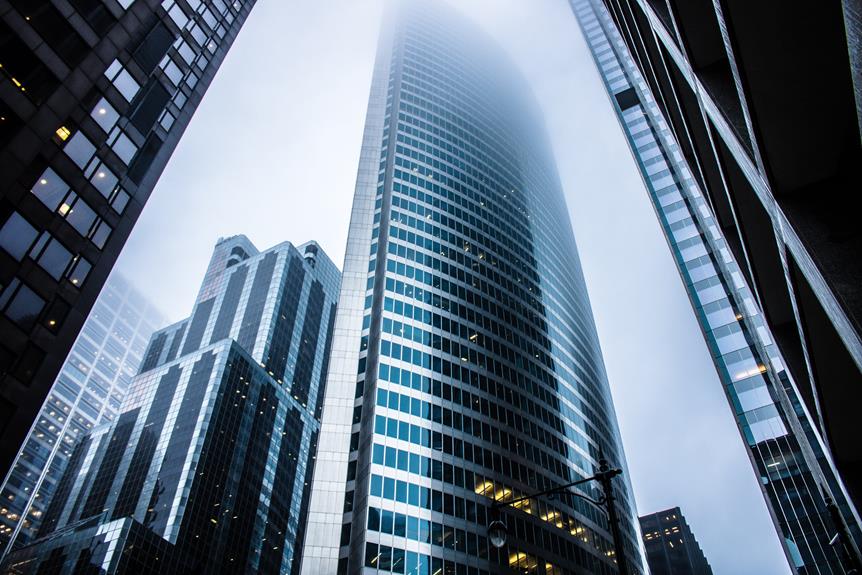Bhola Island, situated in the Barisal Division of Bangladesh, stands as an intriguing testament to the country's rich history and natural splendor. As the largest delta island in the region, Bhola Island exudes an air of majesty that captivates the imagination. From its ancient origins and encounters with pirates to its diverse geography and vibrant communities, this island has a story to tell. But what makes Bhola Island truly fascinating? What hidden treasures lie within its boundaries? Delve deeper into the secrets of this captivating destination as we uncover its history, culture, and natural wonders.
History and Etymology of Bhola Island
Bhola Island, the largest island in Bangladesh, holds a rich history and intriguing etymology that contribute to its unique identity within the Barisal Division. The formation of the island dates back to 1235, and cultivation began around 1300. However, it was during the 16th century that Bhola Island gained prominence due to the presence of Portuguese and Mog pirates who established bases on the island. These pirates played a significant role in shaping the island's history and culture. Their presence not only brought about trade and conflict but also contributed to the island's strategic importance. Today, Bhola Island stands as a testament to its past, with remnants of its pirate-infested history still visible in the form of forts and historical landmarks. The island's history and etymology add to its allure and make it a fascinating destination within the Barisal Division.
Geography and Islands of Bhola
Located in the Barisal Division of Bangladesh, Bhola Island is a delta island renowned for its captivating geography and diverse range of islands. With its natural beauty and ecological significance, Bhola Island attracts visitors from near and far. The island is surrounded by the Lakshmipur and Barisal districts to the north, the Bay of Bengal to the south, and the Meghna River and Shahbazpur Channel to the east. The district is also blessed with two rivers, the Meghna in the east and north, and the Tetulia in the west. Bhola Island itself is the largest island in Bangladesh, while other islands in the district include Manpura Island, Dhal Char, Char Kukri Mukri, Char Jahiruddin, Char Nizam, and Char Nazeur Rahaman. The geographical diversity and ecological significance of the islands make Bhola a must-visit destination for nature lovers.
Administration of Bhola District
Situated in the Barisal Division of Bangladesh, the administrative structure of Bhola District plays a crucial role in governing and managing the diverse range of islands and territories within its jurisdiction. The district is divided into five municipalities, namely Bhola Sadar, Daulatkhan, Burhanuddin, Tazumuddin, and Lalmohan, each with its own local government. Additionally, there are seven sub-districts, known as thanas, including Char Fasson, Manpura, and Dhal Char. The district is further divided into 66 unions and 473 villages, which are governed by local representatives. District governance in Bhola District is responsible for ensuring the smooth functioning of essential services, infrastructure development, and maintaining law and order. The local government plays a vital role in catering to the needs and welfare of the residents, contributing to the overall development of the district and its islands.
Population and Demographics of Bhola
The demographic composition of Bhola District provides a comprehensive understanding of the population residing within its jurisdiction. Here are four key points about the population and demographics of Bhola:
- Population Size: According to the 2022 census, Bhola District has a population of [insert population size]. This data was collected by the Bangladesh Bureau of Statistics, providing an accurate representation of the district's population.
- Cultural Heritage: Bhola District is known for its rich cultural heritage. The diverse population consists of various ethnic and religious groups, contributing to the vibrant cultural fabric of the region. Festivals, traditional rituals, and local customs showcase the unique cultural identity of Bhola.
- Challenges in Population Growth: Despite its cultural richness, Bhola District faces challenges in population growth. Limited access to healthcare and education, as well as inadequate infrastructure, pose obstacles to the development and well-being of the population. Efforts are being made to address these challenges and foster sustainable population growth.
- Socioeconomic Factors: The population of Bhola District is primarily engaged in agriculture, fishing, and small-scale industries. The district's economy heavily relies on these sectors, which provide livelihood opportunities for a significant portion of the population. Efforts to diversify the economy and promote entrepreneurship are underway to improve the socioeconomic conditions of the residents.
Understanding the population and demographics of Bhola District is crucial in formulating effective policies and initiatives to address the unique challenges and harness the potential of this fascinating delta island.
District Information of Bhola
What makes Bhola District in Bangladesh a unique and captivating destination? Bhola District is not only known for its stunning natural beauty but also for its rich cultural heritage and tourism potential. The district, located in the Barisal Division of Bangladesh, is home to the largest island in the country, Bhola Island. This delta island is surrounded by the Bay of Bengal to the south and the Meghna River to the east and north. Bhola District also features other islands like Manpura Island and Char Kukri Mukri. To give you a glimpse of the district's charm, here is a table showcasing some of the tourist spots and cultural heritage sites in Bhola:
| Tourism Potential | Cultural Heritage | |
|---|---|---|
| Kuakata Sea Beach | Bhola Zamindar Bari | |
| Dhal Char | Shahbajpur Mosque | |
| Char Kukri Mukri | Lalmohan Royal Palace | |
| Char Jahiruddin | ||
| Char Nizam |
With its abundance of natural wonders and cultural treasures, Bhola District promises an unforgettable experience for travelers seeking to explore Bangladesh's hidden gems.
Business and Economy of Bhola District
Bhola District, with its captivating natural beauty and rich cultural heritage, also boasts a thriving business and economy that contributes to the district's overall development. Here are four key aspects of the business and economy in Bhola District:
- Fisheries Industry: Bhola District is renowned for its flourishing fisheries industry. The district is located in close proximity to the Bay of Bengal, providing easy access to a diverse range of marine resources. Fishing plays a vital role in the local economy, with a significant portion of the population involved in various aspects of the industry, including fishing, processing, and exporting of fish and seafood products.
- Agricultural Sector: The agricultural sector is another major contributor to Bhola District's economy. The fertile land and favorable climatic conditions make it ideal for cultivating a variety of crops, including rice, jute, vegetables, and fruits. Agriculture provides employment opportunities for a large number of people, and the district's agricultural products contribute to the overall food security of the region.
- Small and Medium Enterprises (SMEs): Bhola District has a vibrant ecosystem of small and medium enterprises. These businesses range from traditional handicrafts and cottage industries to modern manufacturing units. The presence of SMEs not only generates employment but also fosters entrepreneurship and contributes to the socioeconomic development of the district.
- Trade and Commerce: Bhola District serves as a commercial hub for the surrounding areas. The district's strategic location, with access to major waterways and transport networks, facilitates trade and commerce. Markets and bazaars in Bhola attract traders and customers from neighboring districts, promoting economic activities and enhancing the local economy.
The combination of a thriving fisheries industry, a robust agricultural sector, a flourishing SME sector, and vibrant trade and commerce makes Bhola District a key player in the economic landscape of Bangladesh.
Transportation in Bhola District
With an extensive network of transportation infrastructure, Bhola District ensures seamless connectivity within and beyond its borders. The district is well-equipped with ferry services and road infrastructure, making it convenient for both locals and tourists to travel around. The ferry services provide a vital link between Bhola Island and the mainland, facilitating the transportation of people, goods, and vehicles. These ferries operate regularly, allowing for efficient and reliable transportation. Additionally, the road infrastructure in Bhola District is well-maintained, providing smooth and accessible travel routes. The district's roads connect various sub-districts and municipalities, enabling easy movement between different parts of Bhola. Overall, the transportation system in Bhola District plays a crucial role in facilitating economic activities and promoting tourism in the region.
| Mode of Transportation | Description |
|---|---|
| Ferry Services | Crucial link between Bhola Island and mainland. |
| Road Infrastructure | Well-maintained roads connecting sub-districts and municipalities. |
Tourist Spots and Famous Personalities in Bhola
As we explore the vibrant district of Bhola, it becomes evident that its rich tapestry extends beyond its transportation infrastructure to encompass a plethora of captivating tourist spots and renowned personalities that have left an indelible mark on the region. Bhola, with its scenic beauty and cultural heritage, offers a wide range of attractions for tourists to explore. Here are four must-visit tourist spots in Bhola:
- Kuakata Beach: Known as the "daughter of the ocean," Kuakata Beach is a popular destination for its stunning sunrise and sunset views. The beach offers a serene environment, making it an ideal spot for relaxation and meditation.
- Shahbajpur Mosque: This historic mosque, built during the Mughal era, showcases exquisite architectural craftsmanship. It is adorned with intricate designs and is considered a significant religious and cultural site.
- Dhal Char: This island is famous for its lush greenery and tranquil surroundings. Visitors can enjoy boat rides, bird-watching, and exploring the diverse flora and fauna of the island.
- Char Kukri Mukri: Located in the Meghna River, this island is known for its scenic beauty and panoramic views. It offers a serene ambiance, making it a perfect spot for picnics and nature walks.
These tourism attractions, along with the district's rich cultural heritage, make Bhola an enticing destination for travelers seeking a unique and immersive experience.
Frequently Asked Questions
What Is the Cultural Significance of the Name "Bhola Gazi Patni" in Bhola District?
The name 'Bhola Gazi Patni' holds significant cultural significance in the Bhola district. Bhola Gazi Patni, a famous boatman, is revered as a symbol of resilience and bravery among the locals. His name is associated with the rich history and heritage of the region. Furthermore, Bhola Island, being the largest island in Bangladesh, has greatly impacted the cultivation practices in the district, contributing to the agricultural development and livelihoods of the people.
How Did the Formation of Bhola Island Impact the Cultivation Practices in the Area?
The formation of Bhola Island had a significant impact on the cultivation practices in the area. With its fertile soil and proximity to the Meghna River, the island became a prime agricultural region. The local economy thrived as farmers adopted new farming techniques to maximize their yields. The availability of abundant water resources and the deltaic soil allowed for the cultivation of a variety of crops, including rice, jute, and vegetables. These changes in farming practices contributed to the economic growth and sustainability of the region.
What Are Some Notable Industries or Businesses in Bhola District?
Notable industries in Bhola district include agriculture, fishing, and shrimp farming. The district is known for its fertile land, which supports the cultivation of crops such as rice, jute, and vegetables. The coastal location of Bhola also provides opportunities for commercial fishing and shrimp farming. Additionally, small-scale industries such as boat-building, pottery, and handicrafts contribute to the local economy. The district's natural resources and geographical advantages make it an attractive destination for business opportunities in various sectors.
What Is the Main Mode of Transportation for Locals and Visitors in Bhola District?
The main mode of transportation for both locals and visitors in Bhola district is primarily by water. With the district being a delta island, the rivers and channels play a crucial role in connecting different parts of the island. Boats and ferries are commonly used to navigate the waterways, providing a convenient and scenic way to travel within and around the district. This mode of transportation not only serves as a practical means of getting around but also offers a unique experience for travelers to enjoy the beauty of the island's natural surroundings.
Are There Any Unique or Lesser-Known Tourist Spots in Bhola District That Are Worth Exploring?
There are several unique and lesser-known tourist spots in Bhola District that are worth exploring. From hidden gems to offbeat attractions, Bhola offers a range of experiences for visitors. Whether it's exploring the untouched beauty of Manpura Island, discovering the tranquil charms of Dhal Char, or immersing oneself in the rich cultural heritage of Char Nazeur Rahaman, Bhola District has something for every traveler seeking an authentic and off-the-beaten-path experience.





